
1. Machu Picchu (Peru): the lost city of Incas
Machu Picchu (Old Mountain) is a site of pre-Columbian Inca ruins located in the mountainous region at an altitude of about 2350 m. Machu Picchu is located above the Urubamba Valley in Peru, about 70 km northwest of Cusco.
Machu Picchu (Old Mountain) is a site of pre-Columbian Inca ruins located in the mountainous region at an altitude of about 2350 m. Machu Picchu is located above the Urubamba Valley in Peru, about 70 km northwest of Cusco.
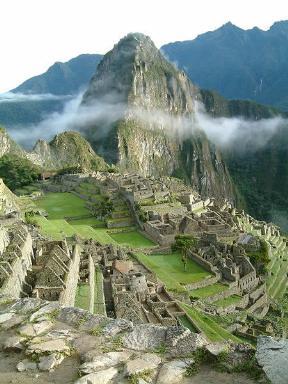
This site was forgotten by the international community, but not by the local community. This site re-discovered by Yale archaeologist Hiram Bingham III university who discovered in 1911.
2. Angkor Wat (Cambodia): The world's largest religious temple.
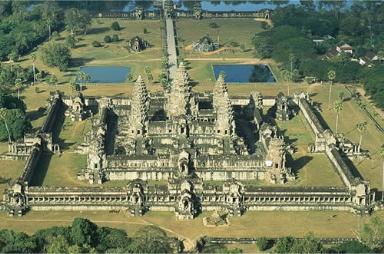
Angkor is a series of locations in the capital of the Khmer kingdom long period from the 9th century until the 15th century AD. The debris was located in the forest and agricultural land in the northern Great Lake Tonle Sap, near Siem Reap, Cambodia today, and is a UNESCO World Heritage Site. The temples at Angkor Wat, is now largely been restored, is part of the example of Khmer architecture.
3. Ancient Egypt was an ancient civilization in northeastern Africa.
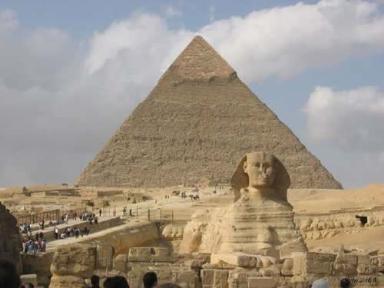
Civilization is centered along the mid to lower reaches of the Nile that glory at about the 2nd century BC, the period known as the New Kingdom periods. Region includes the northern Nile Delta region, up to Jebel Barkal at the Fourth Nile Cataract. At some particular time, Egyptian civilization extended to the southern Levant, Eastern Desert, Red Sea coast, Sinai Peninsula, as well as the Western Desert (focused on the few oases).
Ancient Egyptian civilization evolved over approximately three and a half centuries. Starting with the initial unification of existing groups in the Nile Valley around 3150 BC, this civilization is traditionally considered an end in about 31 BC, during the early Roman Empire conquered and absorbed the territory of Egypt Ptolemy as part of the Roman province. While this is not the first foreign occupation of Egypt, the period of Roman rule caused a political and religious changes gradually in the Nile Valley, which effectively marked the end of independent development of civilization in Egypt.
Ancient Egyptian civilization evolved over approximately three and a half centuries. Starting with the initial unification of existing groups in the Nile Valley around 3150 BC, this civilization is traditionally considered an end in about 31 BC, during the early Roman Empire conquered and absorbed the territory of Egypt Ptolemy as part of the Roman province. While this is not the first foreign occupation of Egypt, the period of Roman rule caused a political and religious changes gradually in the Nile Valley, which effectively marked the end of independent development of civilization in Egypt.
4. Petra (Jordan): Stones structures carved into rocks
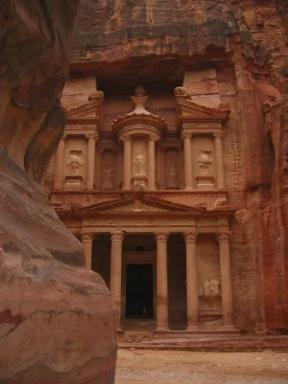
Petra is a city founded by chiseling stone walls in Jordan. Petra comes from the Greek meaning 'stone'. Petra is the symbol and protection techniques.
This word refers to the city building made of stones in the Wadi Araba, a valley in Jordan. The city was founded by digging and carving the rocks as high as 40 meters.
Petra was the capital of the Nabatean kingdom. Founded in 9 BC-40 AD by King Aretas IV as the city that are difficult to penetrate the enemy and secure from natural disasters such as sandstorms.
This word refers to the city building made of stones in the Wadi Araba, a valley in Jordan. The city was founded by digging and carving the rocks as high as 40 meters.
Petra was the capital of the Nabatean kingdom. Founded in 9 BC-40 AD by King Aretas IV as the city that are difficult to penetrate the enemy and secure from natural disasters such as sandstorms.
5. Palmyra (Syria): the bride of desert
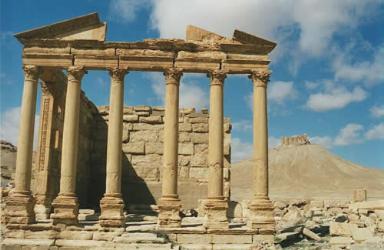
Palmyra was once an important city in Syria, located in an oasis 215 km northeast of Damascus. Formerly known by name of Tadmor (Arabic). The city was once located near the hot springs, Afga, and is an ideal haven for wandering groups of Iraq - Al-Sham (now Syria, Lebanon, Holy Land, Jordan). Strategic location made Palmyra who became famous and prosperous kingdom to his day second century BC.
6. Pompeii (Italy) : buried by volcanoPompeii
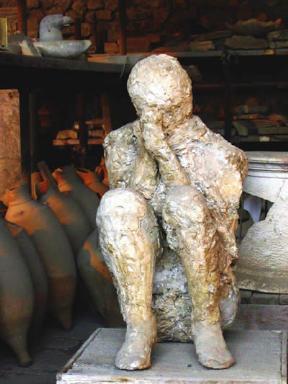
Pompeii (Italy): buried by volcanoPompeii is an ancient Roman city that has been in ruins near the city of Naples and is now located in the Campania region, Italy. Pompeii was destroyed by the eruption of Vesuvius in 79 AD Dust the eruption of Vesuvius Pompeii hoard with everything in it as deep as several feet causing the city lost over 1,600 years before it was rediscovered by accident. Since then digging again this city provides an exceptional view of detailed information on the life of a town in the heyday of the Roman Empire. Currently the city of Pompeii is one of UNESCO World Heritage Site.
7. Palenque (Mexico)
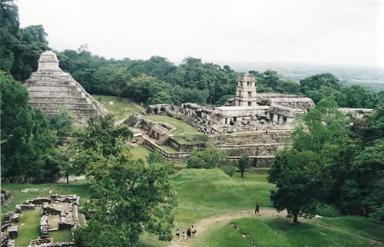
Palenque is a Mayan city's historic heritage located at the foot of the mountain who Tumbala, Chiapas, Mexico. This historic city is not too big but inside it has a building with beautiful architecture, sculpture, carving freehand by the Mayans.
8. Vijayanagar (India): capital of one of the largest Hindu temple.
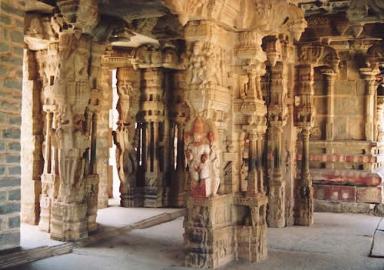
Vijayanagar kingdom is a kingdom of India, since 1336 and is located in the Deccan, South India. Kingdom of Vijayanagar was found by Harihara (Hakka) and his brother Bukka Raya. The kingdom was named after the name of its capital, its name now changed to Hampi in Karnataka, India. The kingdom was established in 1336 and began years ended in 1660.
9. Ephesus (Turkey): one of the most Important cities of early Christianity
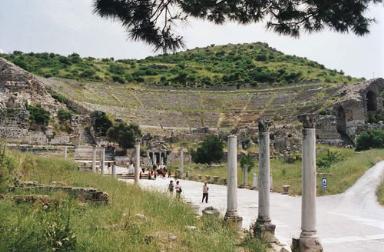
Ephesus (Efes Idioms Turkey), who the town stretches along 3 miles in the southern town of Selcuk, Izmir province, Turkey. The city was once a trading center and the center of Christianity until now. The ruins of Ephesus is one of the favorite tourist attraction in Turkey.
10. Sanchi (India): The Best Preserved group of Buddhist monuments
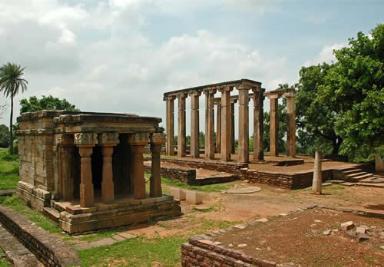
Sanchi is a complex monument augural golden age in the Buddhist kingdom of Ashoka. If today Sanchi same as the temple, or place of residence of the monks. Sanchi monuments three starts Dr century BC to the 12th century. The most famous is Dr. Sanchi Stupa 1, which was built by the Mauryan king. This monument containing carvings who tells about the history of Buddhism.
10 wonders of the strange
4/
5
Oleh
Agus Prasetyo


